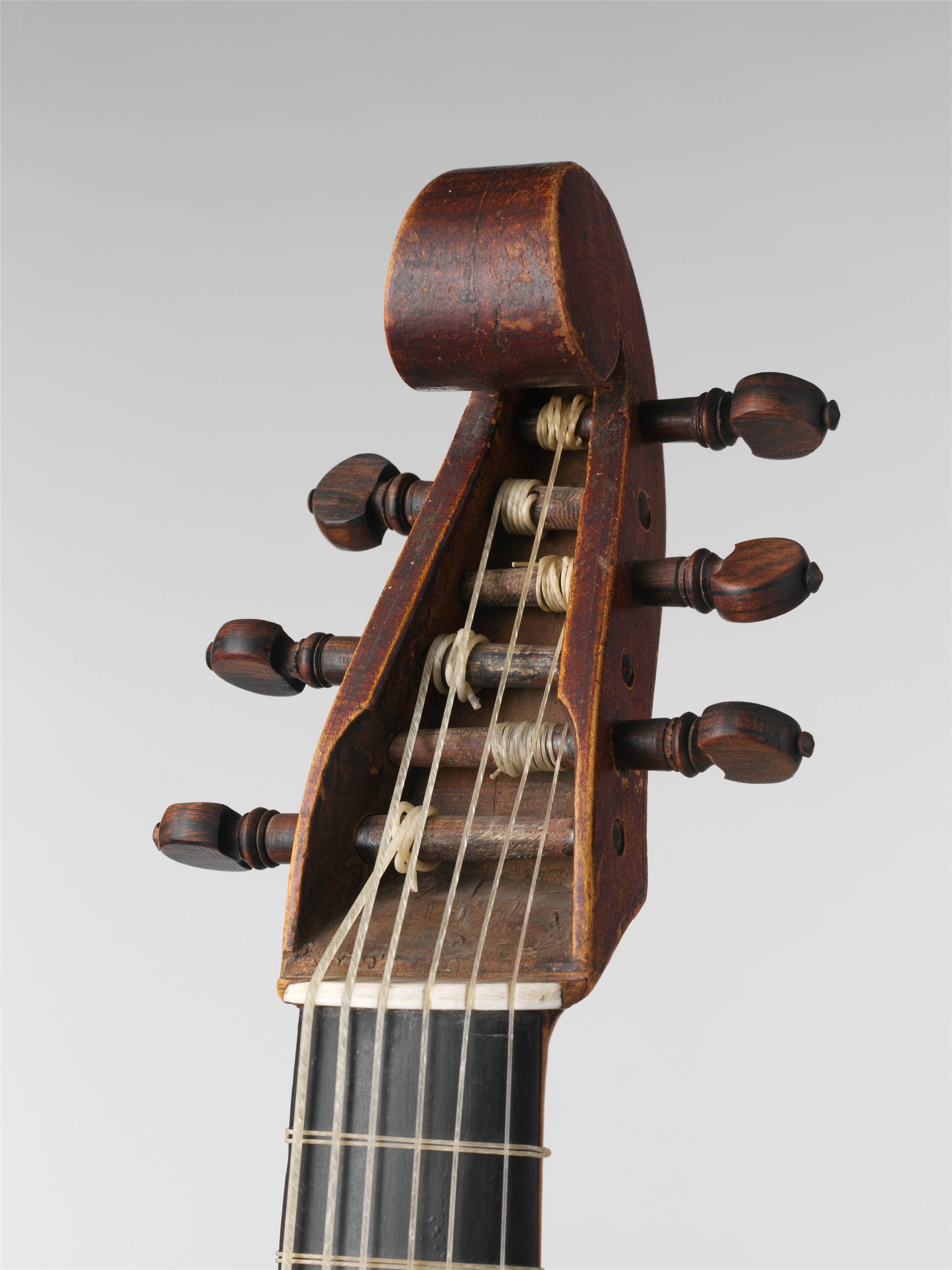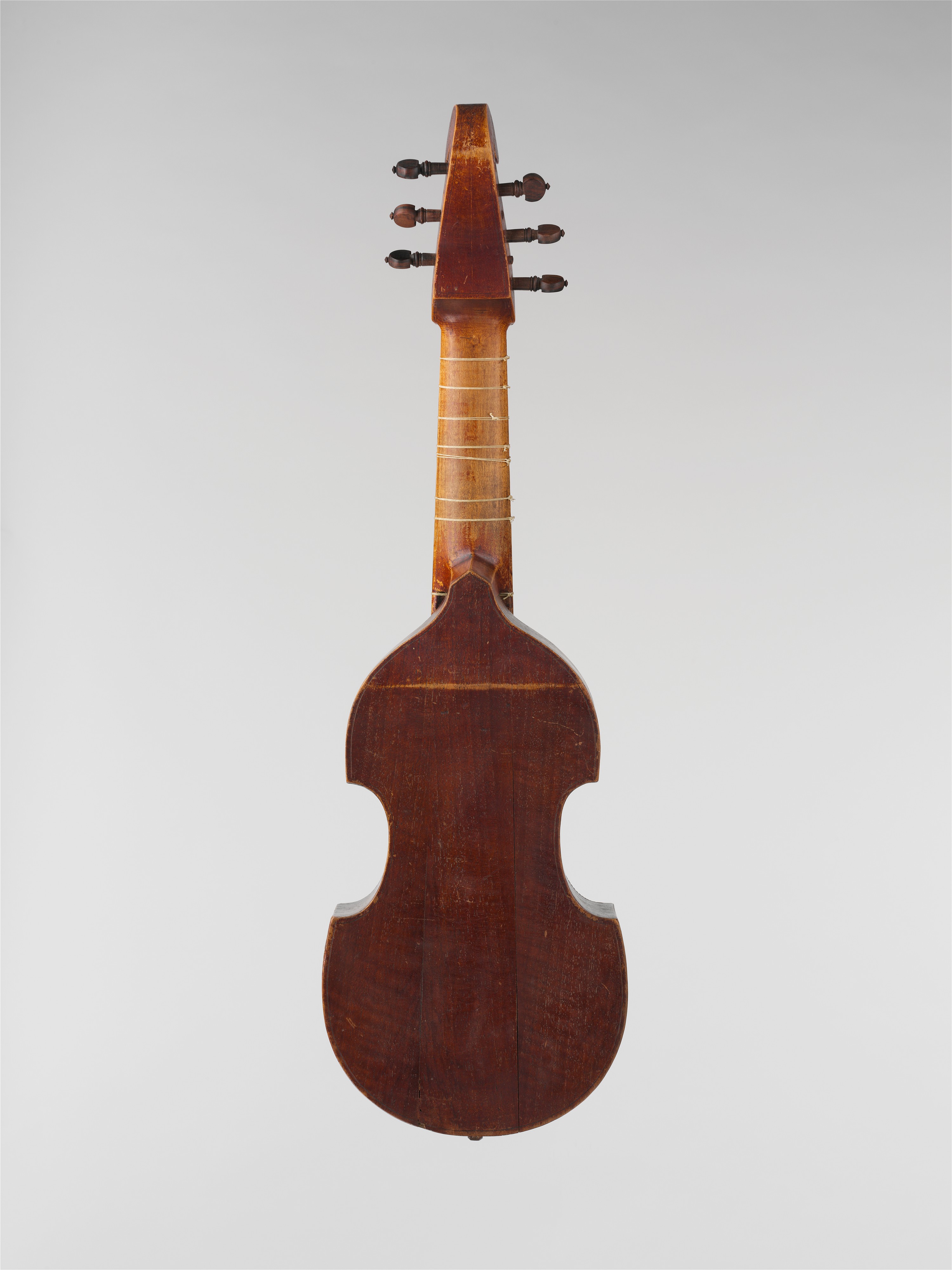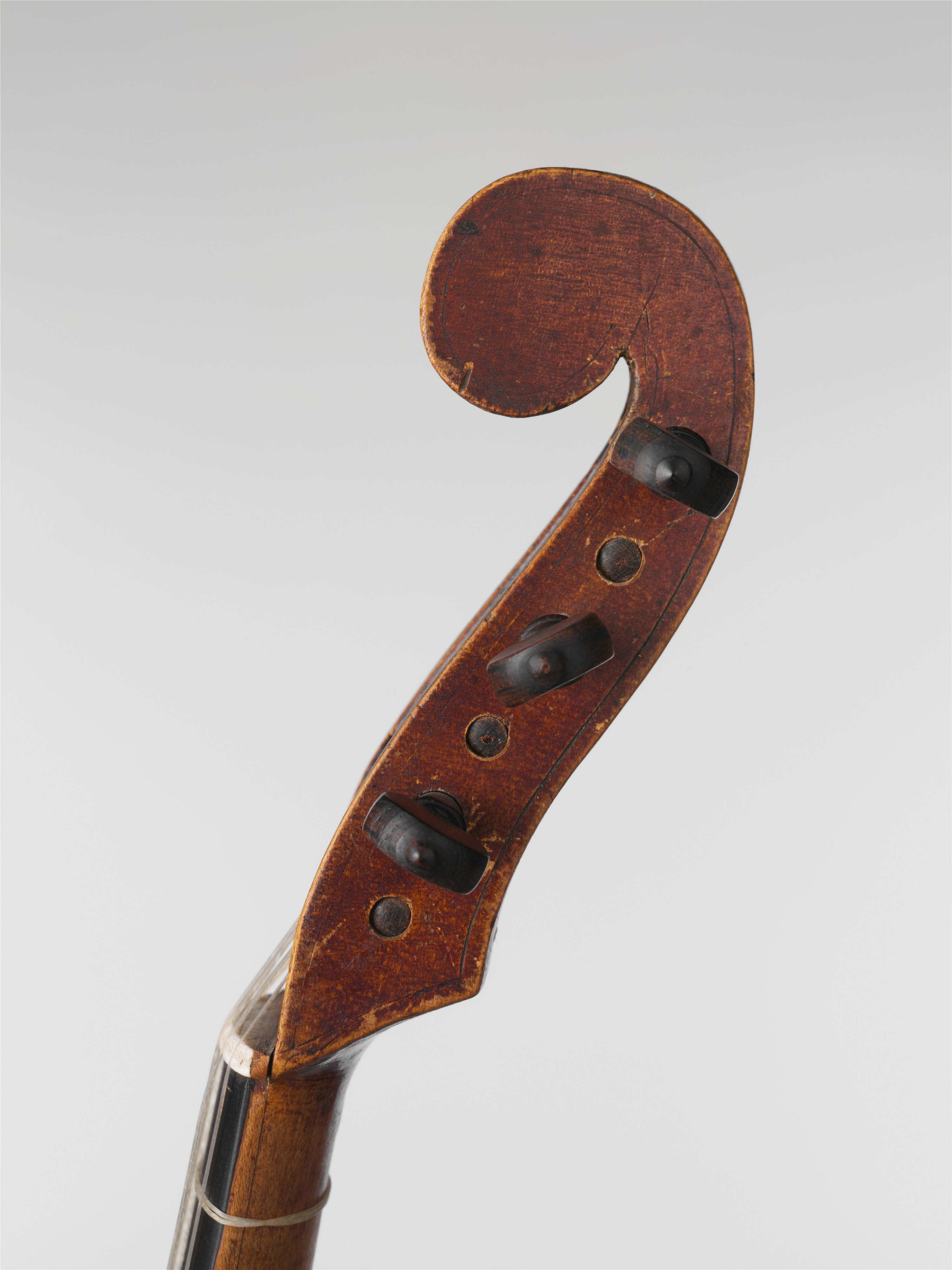Treble Viol
Jean Ouvrard French
Not on view
This treble viol retains its original neck, fingerboard, and tailpiece, and is a rare example of a professional musician's instrument in unaltered condition. Viols were the most esteemed bowed instruments of the late Renaissance, and only gradually displaced by the violin family in the eighteenth century. Viols feature flat backs, sloping shoulders, and six or seven strings, all features which distinguish them from members of the violin family. All viols are played in an upright position between the knees, or da gamba ("at the leg"), and the bow is held palm upwards. Their sound is quieter and less brilliant than that of the violin family, yet considered more pleasing to the ear by Renaissance humanists. Chamber music for consorts of four to six viols was composed during the Renaissance and Baroque eras, and solo works for the bass viol were played until nearly the end of the 18th century.
Due to rights restrictions, this image cannot be enlarged, viewed at full screen, or downloaded.
This artwork is meant to be viewed from right to left. Scroll left to view more.





